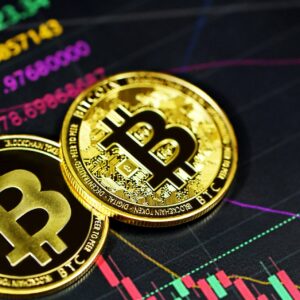In his recent interview with David Lin, Rick Rule, a seasoned investment strategist and commodities investor, shared his deep concerns about the Federal Reserve’s ability to manage the delicate balance between supporting economic growth and controlling inflation. He noted that while recent inflation readings have shown some moderation, he remains deeply concerned about the broader implications of the Fed’s monetary policies. Rule criticized the Consumer Price Index (CPI) as a flawed measure of inflation, arguing that it excludes significant costs such as taxes, which represent a substantial portion of household expenses.
He warned that the Fed’s potential move to cut interest rates, which many expect could happen as early as September, might be driven more by short-term political pressures than by sound economic reasoning. Rule sees such a cut as “irresponsible,” particularly in an environment where the purchasing power of the U.S. dollar is already under pressure. He reminded listeners of the 1970s, a decade marked by high inflation and stagnant economic growth, where the U.S. government effectively reduced its debt burden by inflating away the real value of its obligations. Rule fears that the current trajectory could lead to a similar outcome, where inflation erodes the value of savings and undermines economic stability.
Rule also discussed the performance of Bitcoin and other crypto assets in the context of broader market sentiment. He observed that despite recent corrections, risk assets like Bitcoin have shown resilience, rebounding alongside traditional equities. Rule suggested that the strong liquidity in the market, driven by investor confidence, has supported the prices of these assets even as some cracks begin to appear in other areas, such as high-yield credit markets.
Interestingly, Rule drew a parallel between Bitcoin and gold, noting that both assets have historically been seen as hedges against inflation and currency devaluation. However, he cautioned that while Bitcoin has attracted a significant following as “digital gold,” it remains a highly speculative asset with extreme volatility. This makes it a very different kind of investment compared to the stability traditionally offered by physical gold.
Despite his cautious stance on Bitcoin, Rule acknowledged that the broader interest in risk assets, including cryptocurrencies, reflects a market that is still driven by “greed rather than fear.” However, he warned that this could change rapidly if a Black Swan event were to materialize, which could trigger a flight to safety, benefiting gold over Bitcoin and other riskier assets.
Finally, Rule shared his deep concerns about the possibility of a Black Swan event—an unpredictable, high-impact occurrence that could trigger significant market turmoil.
Before diving into Rule’s concerns, it’s important to understand what a Black Swan event is. Coined by scholar Nassim Nicholas Taleb, a Black Swan event refers to an unpredictable, highly impactful event that is beyond the realm of normal expectations. These events are characterized by their extreme rarity, severe consequences, and widespread belief that they were obvious in hindsight. Examples of past Black Swan events include the 2008 financial crisis and the dot-com bubble burst. In the context of financial markets, a Black Swan event can cause catastrophic losses and significantly disrupt economic stability.
Rule pinpointed the trillions of dollars invested in high-yield ETFs as a critical area of vulnerability. He believes these ETFs, while offering liquidity on the surface, are built on a foundation of junk bonds and over-the-counter debt, which are far less liquid and carry substantial credit risk.
Rule explained that in a scenario where market confidence is shaken, retail investors might rush to liquidate their holdings in these ETFs. The ETF managers, in turn, would be forced to sell the underlying junk bonds into a market that could not absorb them quickly enough, potentially leading to a severe liquidity crisis. He described this situation as a “run on the bank” that could be almost impossible to contain, drawing a stark comparison to historical financial panics.
The core of Rule’s fear lies in the disconnect between the liquidity of the ETF structure and the illiquidity of its underlying assets. According to him, if a large-scale sell-off were to occur, the rush to exit could overwhelm the market’s ability to respond, creating a feedback loop of declining prices and escalating fear. This is the essence of a Black Swan event—something that the market has not priced in but which could have devastating consequences if it materializes.
In discussing gold, Rule emphasized its historical role as a safe haven asset during periods of economic uncertainty. He noted that while gold prices have risen in recent months, the performance of gold mining stocks has been less impressive. This discrepancy, he explained, is largely due to rising production costs that have eaten into profit margins, despite the higher gold prices.
Moreover, Rule pointed out that institutional investors have become disenchanted with gold equities, a sentiment that traces back to the early 2000s when gold prices surged but mining companies failed to translate this into higher free cash flow. However, he believes that if gold prices continue to rise, operating margins for miners could improve, eventually attracting institutional capital back into the sector.
Rule also touched on the role of central banks, particularly those outside the Western world, in driving demand for physical gold. Unlike retail and institutional investors, central banks do not purchase gold stocks, which has contributed to the recent divergence between the price of gold and the performance of gold mining equities. He expects that as retail interest in gold returns, which has already started in the last few months, we may see a stronger bid for gold stocks, potentially leading to a resurgence in their performance.
Featured Image via Pixabay









